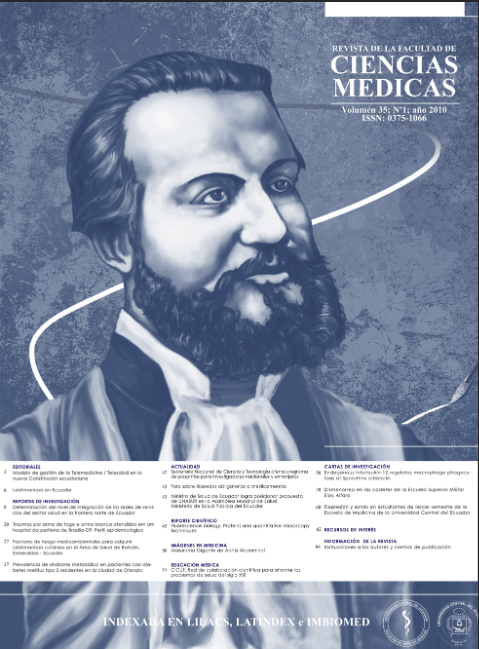Fluorescence biology: Proteins and quantitative microscopy techniques
Abstract
Powerful tools of cell-imaging have emerged during the last decades. The combination of fluorescent proteins (FPs) with microscopy techniques have created a new fascinating area of research called fluoresce biology.
Nowadays, FPs and quantitative microscopy techniques (QMTs) are widely used to answer cell-biological questions in bio-medicine and bio-molecular sciences. Since the remarkable discovery of two FPs, the green fluorescent protein (GFP) and the red fluorescent protein (DsRed), several mutations have been introduced in them allowing the development of a spectacular palette of FPs. In parallel, advances in optical components, filters, detectors, dichroic mirrors had allowed the development of microscopy techniques that can combine FPs to study, for instance, the interactions between proteins and the diffusion of relevant bio-molecules.
Downloads
Metrics
References
2. Kremers GJ. Optimization of FPs for novel quantitative multiparameter microscopy approaches [dissertation]. Amsterdam: University Van Amsterdam; 2006.
3. Shimomura O, Johnson FH, Saiga Y. Extraction, purification and properties of aequorin, a bioluminescent protein from the luminous hydromedusan. Aequorea. J Cell Comp Physiol 1962; 59: 223 – 239.
4. Chalfie M, Tu Y, Euskirchen G, Ward WW, Prasher DC. Green FP as a marker for gene expression. Science 1994; 263: 802 – 805.
5. Heim R, Cubitt A, Tsien RY. Improved green fluorescence. Nature 1995; 373: 663 – 664.
6. Zhang J, Campbell RE, Ting A, Tsien RY. Creating new fluorescent probes for cell biology. Nat Rev Mol Biol 2002; 3: 906 – 918.
7. Prasher DC, Eckenrode VK, Ward WW, Prendergast FG, Cormier MJ. Primary structure of the Aequorea victoria green-FP. Gene 1992; 111: 229 – 233.
8. Yang T-T, Cheng L, Kain SR. Optimized codon usage and chromophore mutations provide enhanced sensitivity with the green FP. Nucleic Acids Res 1996; 24: 4592 – 4594.
9. Kremers GJ, Goedhart J, van den Heuvel DJ, Gerritsen HC, Gadella TW Jr. Improved green and blue FPs for expression in bacteria and mammalian cells. Biochem 2007; 46: 3775 – 3783.
10. Tsien RY. The green FP. Annu Rev Biochem 1998; 67: 509 – 44.
11. Matz MV, Fradkov AF, Labas YA, Savitsky AP, Zaraisky AG, Markelov ML, Lukyanov SA. FPs from nonbioluminnescent Anthozoa species. Nat Biotechnol 1999; 17: 969 – 73.
12. Bevis BJ, Glick BS. Rapidly maturing variants of the Discosoma red FP (DsRed). Nat Biotechnol 2002; 20: 83 – 87.
13. Campbell RE, Tour O, Palmer AE, Steinbach PA, Baird GS, Zacharias D, et. al. A monomeric red FP. PNAS 2002; 99: 7877 – 7882.
14. Heim R, Prasher DC, Tsien RY. Wavelength mutations and post-translational autooxidation of green FP. PNAS 1994; 91: 12501 – 12504.
15. Referencias Heim R, Tsein RY. Engineering green FP for improved brightness, longer wavelengths and fluorescence resonance energy transfer. Curr Biol 1996; 6: 178 – 182.
16. Orno M, Cubbit AB, Kallio K, Gross LA, Tsien RY, Remington SJ. Crystal structure of the Aequora Victoria gree FP. Science 1996; 273: 1392 – 1395.
17. Nagai T, Ibata K, Park ES, Kubota M, Mikoshiba K, Miyawaki A. A variant of yellow FP with fats and efficient maturation for cell-biological applications. Nat Biotechnol 2002; 20: 87 – 90.
18. Shanner NC, Cambell RE, Steinbach PA, Giepmans BN, Palmer AE, Tsien RY. Improved monmeric red, orange and yellow FPs derived from Discosoma sp. Red FP. Nat Biotechnol 2004; 22: 1524 – 1525.











